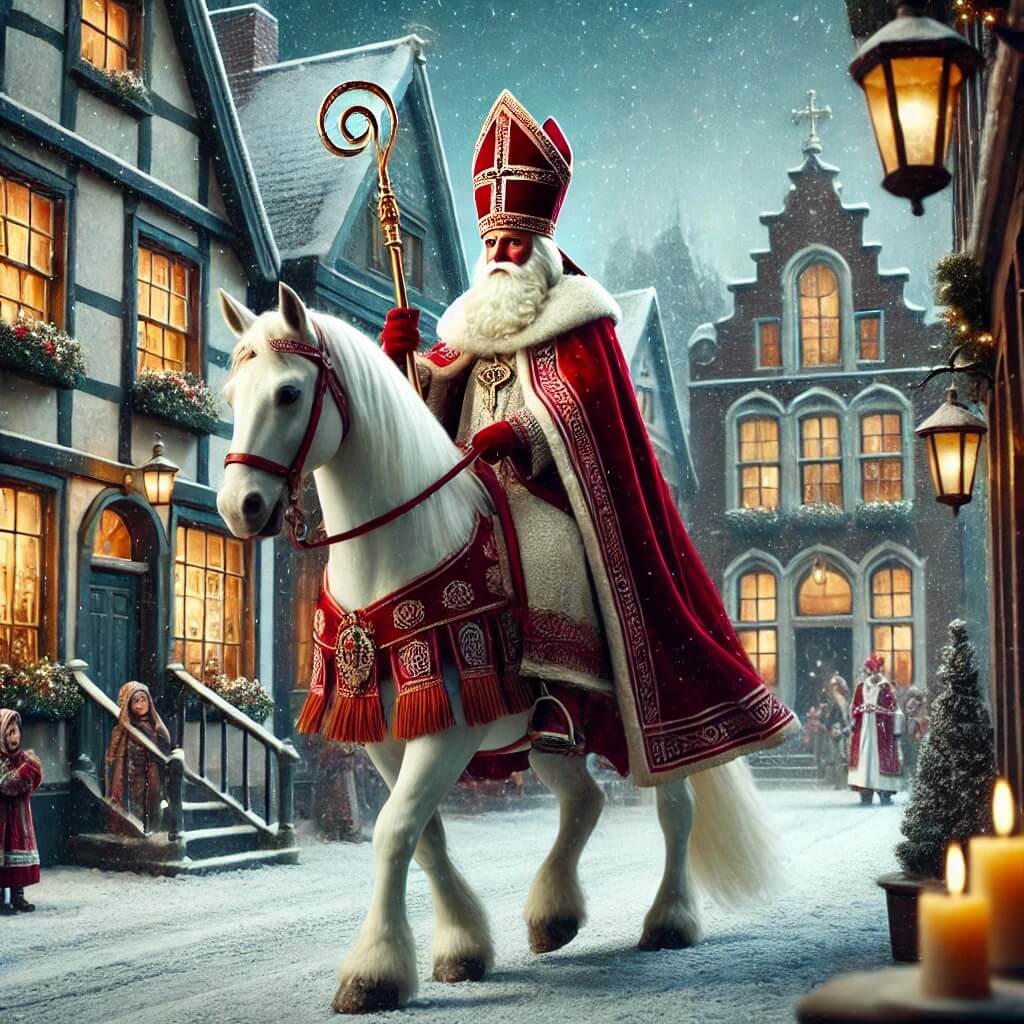History of Santa

The History of St. Nicholas and the Evolution of Santa Claus
The figure of Santa Claus, beloved by children across the world during the Christmas season, has evolved from the historic and religious figure of St. Nicholas. Over centuries, this transformation has been shaped by folklore, literature, and commercial influences, leading to the modern image of Santa Claus—a jolly man in a red suit who delivers gifts on Christmas Eve. This report explores the origins of St. Nicholas, his evolution into Santa Claus, and how various cultural elements shaped the figure we recognize today.
1. St. Nicholas:
The Historical Origins St. Nicholas was born around 270 AD in the ancient city of Patara, in what is now modern-day Turkey. He later became the Bishop of Myra (now Demre, Turkey) and was known for his piety, generosity, and miracles. His most famous story is about saving three poor sisters from being sold into servitude by secretly providing them with dowries.
Nicholas’ reputation for kindness and miracle-working spread throughout Europe, and by the Middle Ages, he was one of the most popular saints. His feast day, December 6, became associated with gift-giving, particularly in the Netherlands, where he was called “Sinterklaas.”

2. The Evolution of Sinterklaas
In the Netherlands, St. Nicholas became “Sinterklaas,” a figure who delivered gifts to children on the eve of his feast day. Dutch settlers brought the tradition to the American colonies, where the name “Sinterklaas” gradually evolved into “Santa Claus.”
3. Santa Claus in America:
The Influence of Literature The modern transformation of Santa Claus began in 19th-century America. Two key figures contributed to this shift:
• Washington Irving (1809): In his book Knickerbocker’s History of New York, Irving first Americanized the Dutch Sinterklaas into a jolly, pipe-smoking figure.
• Clement Clarke Moore (1823): In his famous poem “A Visit from St. Nicholas” (also known as ”’Twas the Night Before Christmas”), Moore depicted Santa as a plump, jolly man who flies from house to house in a sleigh pulled by reindeer. This poem laid the foundation for much of Santa’s modern imagery.

4. The Creation of the Modern Santa Claus:
Commercial Influence The final step in Santa Claus’ evolution occurred in the early 20th century, with the help of commercial advertising. The Coca-Cola Company played a significant role in shaping the current image of Santa Claus.
Starting in the 1930s, Coca-Cola ran Christmas advertisements featuring Santa Claus as a portly, merry man dressed in a red suit with white trim. These images, created by illustrator Haddon Sundblom, became iconic worldwide and solidified Santa’s modern appearance.

5. Santa Claus in Modern Culture Today
Santa Claus is a global symbol of Christmas, representing generosity, joy, and the spirit of giving. He is often depicted in popular media, films, and literature, bringing presents to children around the world on Christmas Eve. In many countries, Santa has become secularized, although his roots in St. Nicholas’ Christian values of charity remain important in many cultures.

References
1. Forbes, Bruce David. Christmas: A Candid History. University of California Press, 2007.
2. Bowler, Gerry. Santa Claus: A Biography. McClelland & Stewart, 2005.
3. Restad, Penne L. Christmas in America: A History. Oxford University Press, 1996.
4. Coca-Cola Company. “The History of the Coca-Cola Santa Claus.” Coca-Cola Journey, 2023.
5. “St. Nicholas, Bishop of Myra.” Encyclopedia Britannica, 2023.
